Each year, the European Commission hosts a week-long event dedicated to just this – bringing together representatives from a diverse range of communities and stakeholders, united in a common goal of helping our ocean.
The European Ocean Days are hosted in Brussels, Belgium, and boast a fully packed, week-long program of events and opportunities for knowledge-sharing, networking and inspiration for those working with ocean-related topics.
Bringing together projects, stakeholders, interest groups and policymakers, the event is closely connected to the EU Mission: Restore our Ocean and Waters, and outcomes from the week help to shape future initiatives from the Commission. Mission Ocean is a novel funding program under Horizon Europe focused on developing and verifying concrete solutions to save our ocean and waters and shaping their futures by 2030. 67 Mission Ocean projects have been launched so far, of which SINTEF Ocean coordinates two and participates in six others.
As representatives from SINTEF Ocean, we have been participating in the week’s activities on behalf of the CLIMAREST, SEADOTs, Iliad and DTO-Bioflow projects and have had an inspiring and professionally in-depth week. These days are very important for shaping the future of the EU ocean and waters policies, and we are thankful to have had the opportunity to present for and discuss directly with the Mission board, the EU Commission and other policy makers, as well as fellow researchers and practitioners.
CLIMAREST was invited to present on the main stage during the 3rd annual Mission Ocean Forum, presenting our solutions to more than a thousand participants, including the Commission’s executive agencies, the Mission board, politicians and actors from the ocean community. We took this opportunity to present the soon-to-be-launched Marine Restoration Toolbox – the platform being developed to facilitate more efficient restoration efforts all across the EU in the years to come. We also reminded the listeners that, although we need large-scale solutions fast to save the Ocean, both ecological restoration and innovation processes take time. We are proud of what we have accomplished in the two first years of the project and will keep up the pace to deliver the solutions that we need.
A busy week of creating impact through sharing and learning
With a week full of meaningful events, our calendars were full. Here are some highlights from some of the main moments.
Workshop with CLIMAREST and A-AAGORA
We started the week off with a joint workshop between CLIMAREST and our sister project A-AAGORA entitled Gauging Recipes for the Success of Marine Restoration. Here, attendees from our projects and the restoration community discussed the viability of various restoration actions, how to best foster community involvement and stakeholder engagement, and methods for evaluating the success of various restoration initiatives.

Mission Ocean and Waters project meeting
In parallel, those of us who are project coordinators attended the Mission Ocean and Waters projects meeting which gathered all 67 ongoing Mission Ocean projects as well as beneficiaries and other relevant actors to discuss if we are collectively reaching the Mission objectives, and what we can do to have a wider uptake and impact of the ongoing work.
The main conclusion is that we are not yet reaching the Mission objectives, but we are collectively on the way. We need to secure more long-term funding to monitor and follow up the work initiated in the demonstration pilots across the EU, particularly with regards to restoration of ecosystems which cannot be finalised within a 3-4 year project period.
Workshop on key performance indicators (KPIs) and long-term impact monitoring
How do we measure our impacts? The impact of a project can be understood as the long-term effects the project results and outputs will have for nature and society beyond its lifetime. We discussed among ongoing coordination projects and innovation projects what frameworks are currently used to monitor project impact, and it turns out this is highly variable.
We concluded that a common way to assess long-term impact is needed and that guidelines for this should be set up. There are efforts moving forward both from the EU Commission, the European Environmental Agency and the five major coordination and support actions (CSAs) of Mission Ocean. Hopefully we will soon have this framework to use in the assessment of the impacts of our projects.
Waves of Collaboration
SINTEF also participated in the “Waves of Collaboration” matchmaking event with speed talks from Anatoly Sinitsyn representing the Arctic demonstration case in the CLIMAREST project and Lara Veylit representing the SEADOTs project.
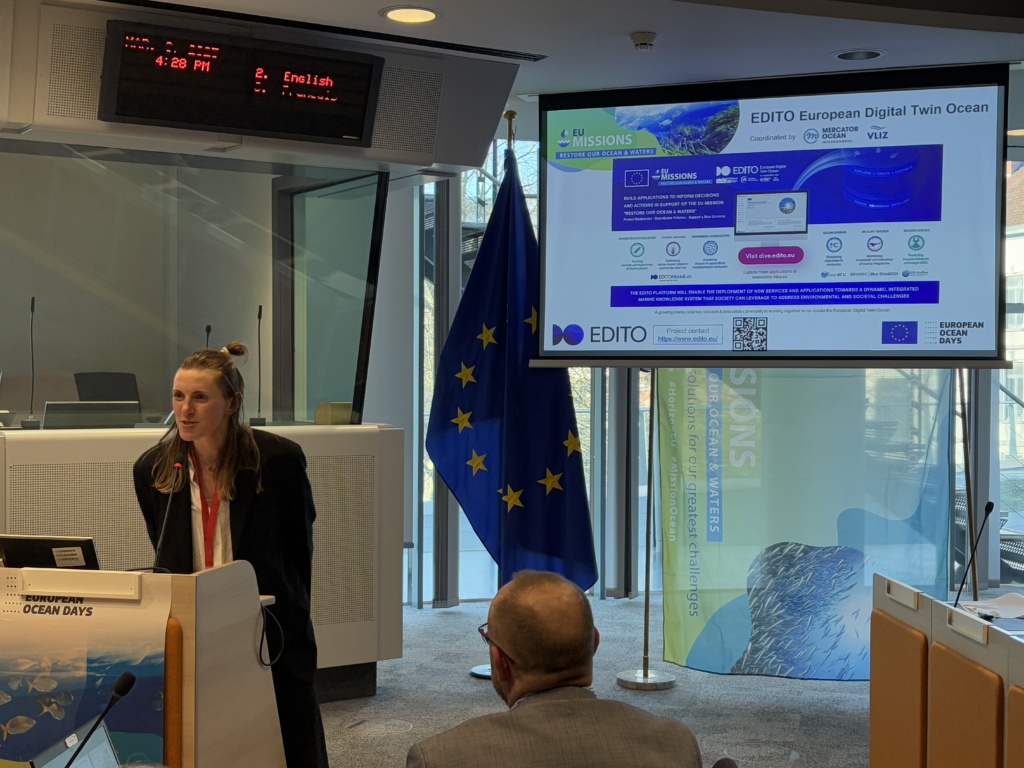
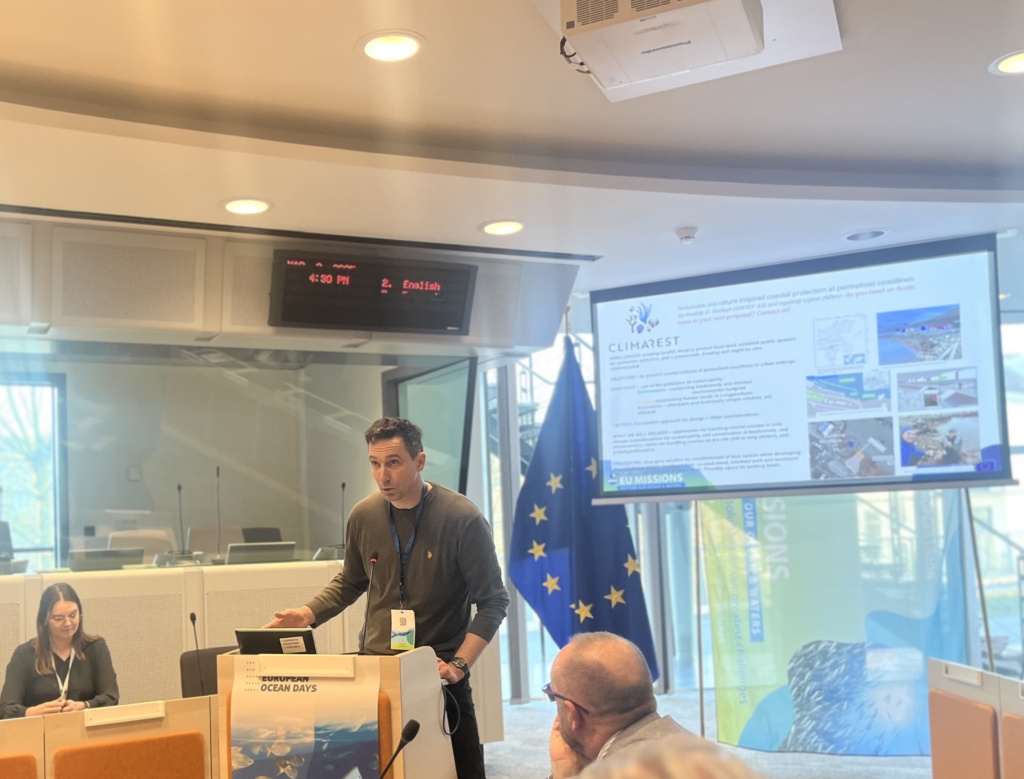
Launch of our new children’s book
The same day, we officially launched the pre-print version of our brand-new children’s book for increasing ocean literacy – Explore the Ocean with Clio! Funded by the European Union, UK Research and Innovation and Sparebank1 SMN Samfunnsutbyttet, the book is a collaboration between CLIMAREST, A-AAGORA, Mission Ocean and BlueMissionAA. It aims to actively engage and inspire readers and show, in a colourful way, how important our oceans are and why it is imperative that we restore and care for the degraded marine ecosystems. We launched the book at the Ocean Literacy Island, an exhibition that featured a wide range of initiatives aimed at boosting ocean literacy and engaging people of all ages.
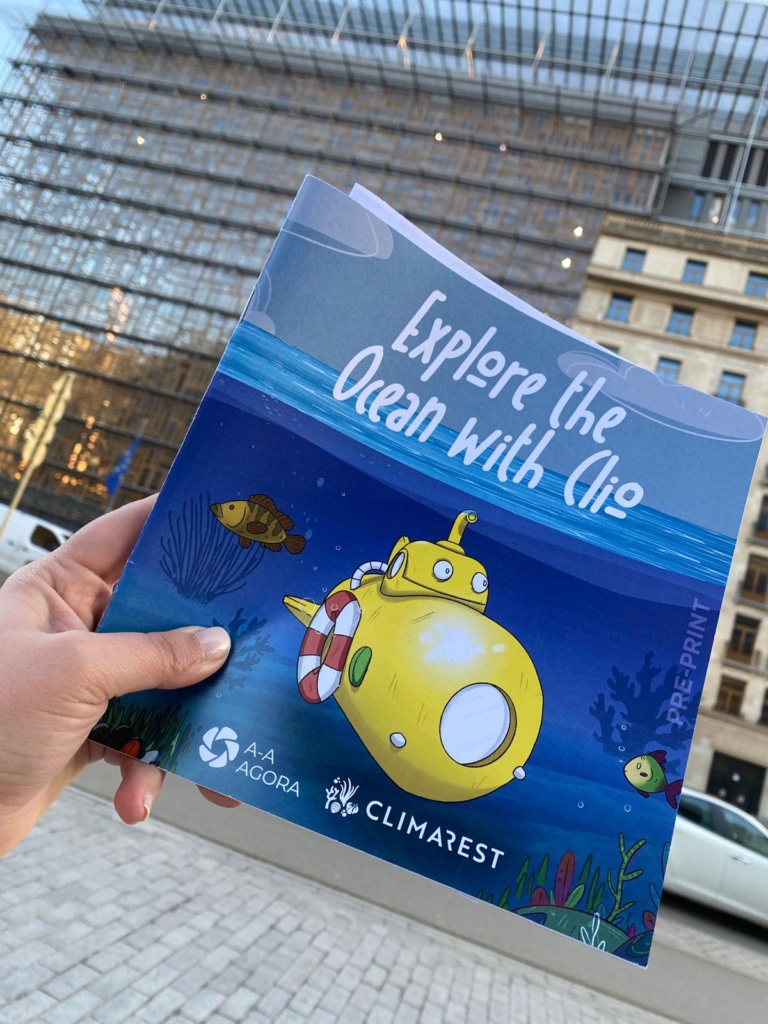
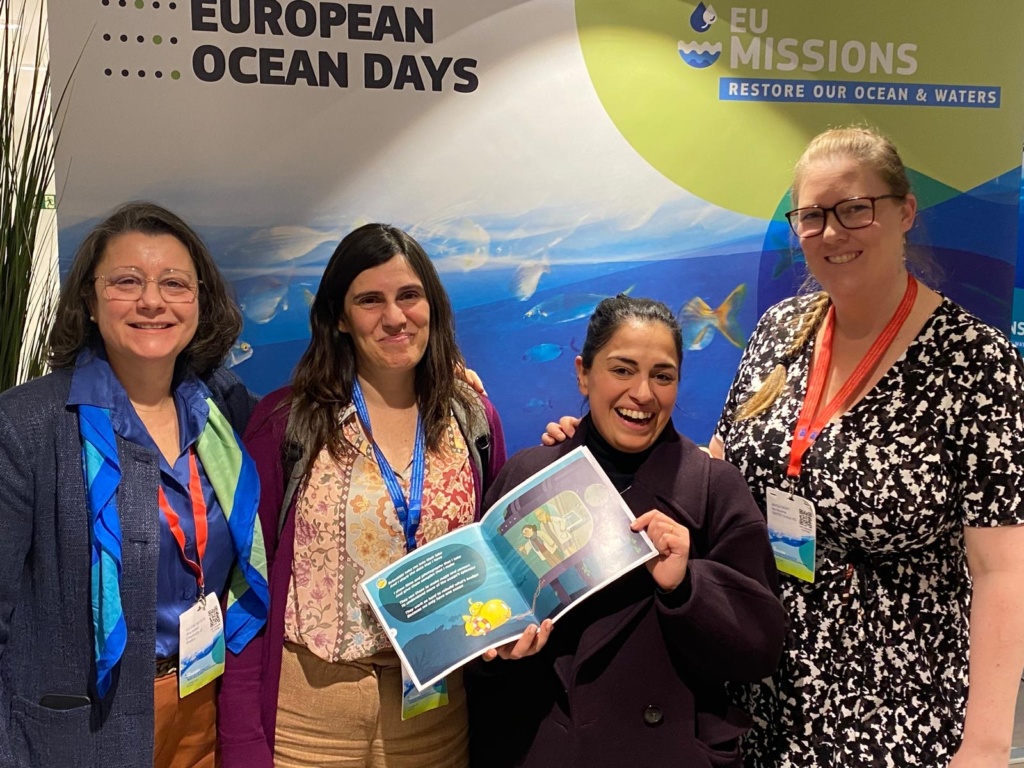
Mission Ocean Forum
The main event of the week was the EU Mission: Restore our Ocean and Waters Forum. CLIMAREST project coordinator Ida Beathe Øverjordet took the main stage and showcased the work being done in the demonstration areas and in the development of a digital toolbox for marine restoration.
The scientific coordinator of SEADOTs Lara Veylit was invited to take part in a panel discussion about digital twins and how to make their development and rollout more efficient across disciplines that are not traditionally considered in ocean models.
Veylit discussed the importance of bringing social, economic, and environmental data into the Digital Twin of the Ocean (DTO) to ensure that decision making is data driven. In this session, the importance of communication and building a common understanding for developing digital tools such as digital twins was highlighted. Here, the work done in CLIMAREST, SEADOTs, and Iliad was discussed as was the importance of maintaining funding for large-scale data infrastructure projects such as EDITO and Blue-Cloud.
In the exhibition area of the Forum, CLIMAREST shared a stand with A-AAGORA, BlueMissionAA and the OKEANO CSA and had the opportunity to meet and dialogue with colleagues from Mission Ocean, the European Commission, partner and stakeholder institutions and fellow Mission Ocean projects all across Europe.
Visitors to our stand were able to put on our VR glasses and experience the restoration work being done at our demo sites first-hand, see the data collected by citizen science divers in Madeira, hold a resin model filled with sewage waste collected from the seafloor in Svalbard, learn about the stakeholder work being done by our teams across Europe and be inspired by the replication work that is now gearing up for the years to come.
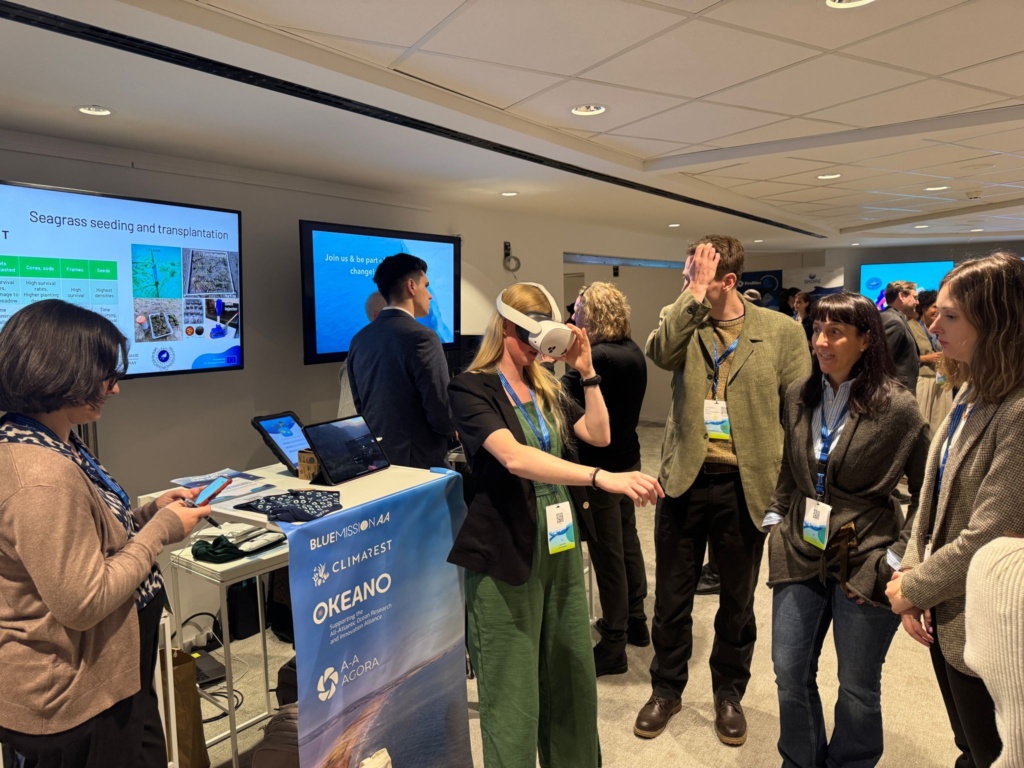
Meeting with Mission communities – regions, cities, ports and islands
Looking to the future, CLIMAREST’s five newly launched replication sites were in focus during the “Empowering Local Changemakers – ports, Islands, cities and regions” event, which showcased local initiatives and discussed how to strengthen cooperation amongst actors and empower groups to implement actions on the ground.
EU Blue parks community workshop
This year’s focus for the EU Blue Parks workshop was marine protected areas. The emphasis was on how to balance the dual realities of how these can be efficient measures to protect and restore biodiversity, but at the same time be a source of conflict with actors like fishing communities that depend on the area for their livelihood.
We heard success stories such as how the Azores at the end of last year managed to protect 30% of their marine areas. Out of the impressive area of 287,000 km2, 15% is strictly protected, meaning no economic and destructive activities are allowed. This is an inspiration to other regions and countries to reach the global target of 30% protection of our Ocean.
From this case, it was interesting to learn about the pathways to successful implementation of marine protected areas through site selection in collaboration with stakeholders, and communication about the benefits of protection, as well as the actual increase in fish catch in areas nearby the protected areas.
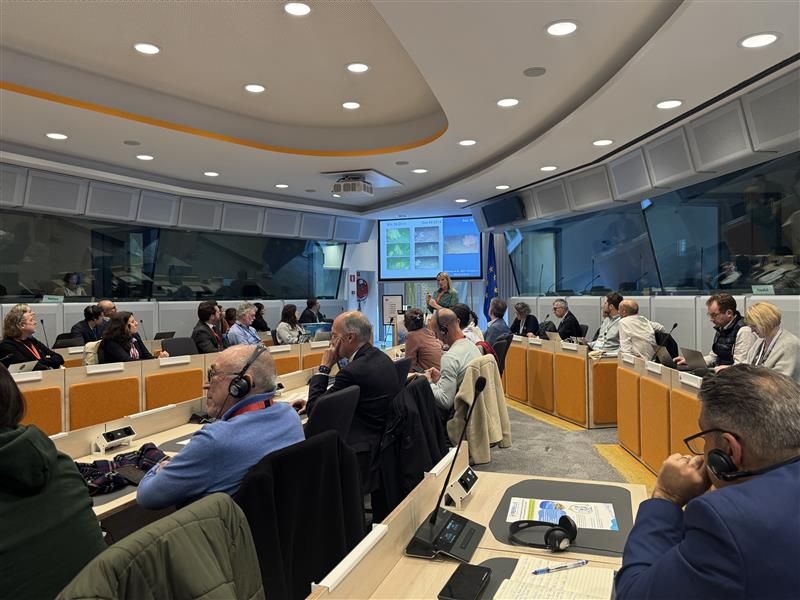
Collaborating to build long-term impact
At this year’s European Ocean Days, there was a particular emphasis on the coming European Ocean Pact for ensuring sustainable ocean health and management, and European Water Resilience Strategy for sustainable water management.
This past January and February, the European Commission ran a call for evidence to shape the European Oceans Pact, and CLIMAREST submitted input based on the experiences and knowledge we have gained during our work. The Pact will focus on creating sustainable synergies between the ocean and the blue economy, and acknowledge communities’ co-dependence on the ocean while simultaneously working towards a resilient and healthy ocean. Following this pact going forward and at future Ocean Days in years to come, will build upon the work of the project and serve as evidence of a Europe-wide legacy and lasting impact.
The focus of the Mission Ocean portion of the EU Ocean Days was on building collaborations across Mission Ocean projects, in part to maintain and grow existing initiatives. The end of projects and their funding can have negative effects on the development and maintenance of networks that empower communities. Furthermore, ecological processes do not function on the same timescale as funding. Therefore, marine restoration projects such as CLIMAREST need plans and funding for monitoring to measure the success of each action implemented.
One long-term initiative that took centre stage was the Digital Twin of the Ocean (DTO), which aims to be a centralised system for data. In the DTO, models and subject matter expertise is combined and made openly available for long-term use. SINTEF Ocean is involved in a number of projects that contribute to the DTO, including CLIMAREST (where digital twin demonstrators are made for each demonstration area), SEADOTs (where social-ecological data is being integrated into digital twins in three demonstration areas), DTO-Bioflow (which aims to bring “sleeping” biodiversity data into DTO), and Iliad (which has developed a Marketplace for digital twins and their components so they can be easily found and accessed).
A Mission for the World
Our week at European Ocean Days this year has rejuvenated our inspiration and created momentum for our daily work. It is this forward-thinking momentum that lies at the core – how the work we do now can be utilised and upscaled in the future to create a wide-reaching and lasting impact, both in Europe and the world.
But we also need to remember that this work takes time, and this was our main message to those shaping the future programs and Mission objectives. Restoration takes time, and innovation takes time. We cannot solve all the problems and save the ocean in just two years. We need patience, we need support and we need community.

As John Bell, director of the European Commission’s “Healthy Planet” and Directorate-General for Research and Innovation said during the Mission Ocean projects meeting, “No pressure folks, you just need to save the ocean.”
With this spirit and plenty of motivation in tow, we look forward to continuing our work on developing knowledge and tools for a healthier, more resilient ocean for generations to come.











Comments
No comments yet. Be the first to comment!